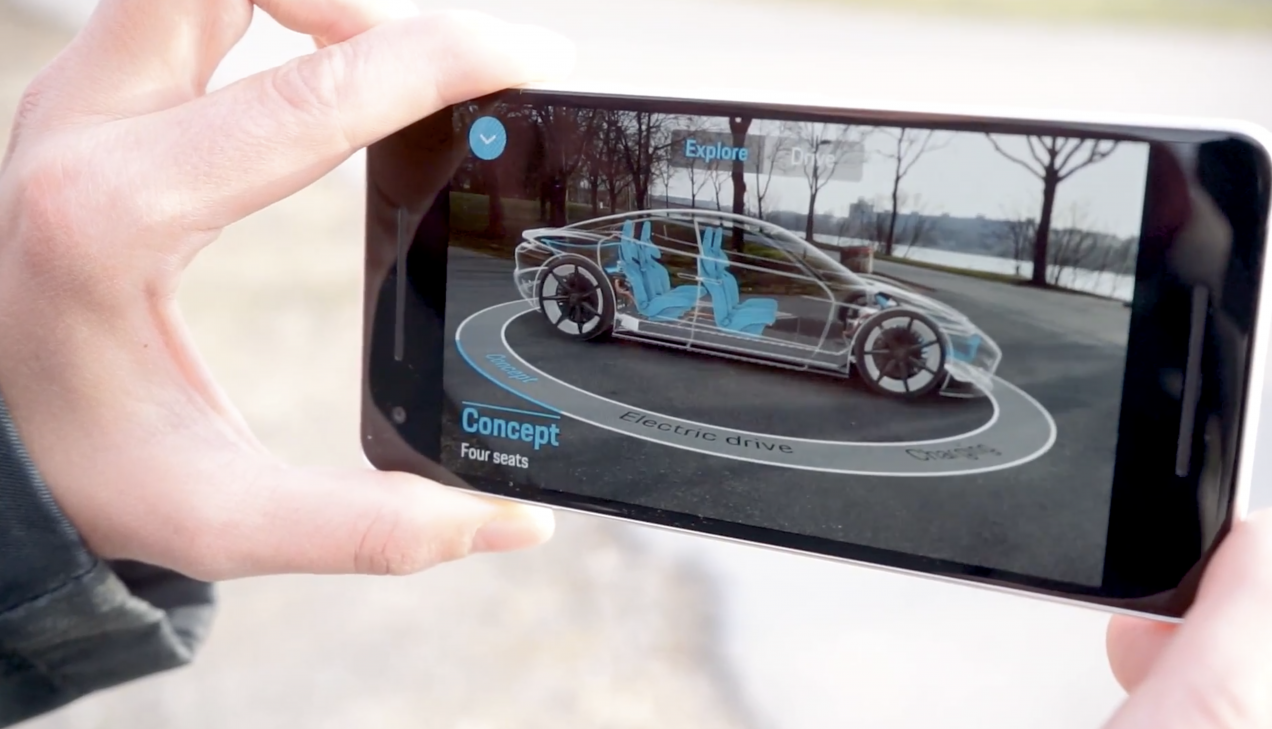

Humans and Technology / AR
AR still doesn’t have a killer app, but Google’s ARCore is here to help
Its AR developer kit for Android devices is now open to everyone. That will spur more innovation.

You may not have a real Porsche in your driveway, but augmented reality will now let you plonk a virtual one there using a smartphone—and take it for a simulated spin.
That experience was created using ARCore, a set of software tools from Google that makes it easier for developers to overlay digital images on the real world through a mobile device’s camera. On Friday, the company announced that any developer can now use ARCore; it had previously given a preview to a select few.
Apple and Facebook both released AR developer tools last year. There are iPhone apps for arranging virtual furniture in your living room or playing games that seem to float in midair. But the sheer size of the Android phone market might just be what finally enables developers to discover something mobile AR has so far been lacking—a killer app.
The most promise so far has emerged in gaming. Analytics firm Sensor Tower says games dominate the 10 most downloaded apps built with Apple’s set of AR tools, ARKit, between September 2017 (when ARKit launched) and the end of the year. Still, nothing has yet come close to the wild success of the Pokémon Go app, built before ARKit even existed, which sent hordes of people hunting for virtual creatures when it was released in 2016.
The Android ecosystem is vast; by the middle of last year there were estimated to be more than two billion Android phones in use, compared with 700 million iPhones. Only the 100 million Androids with the most modern cameras and sensors will be able to support apps built with ARCore initially, but the proportion will grow significantly over the next couple of years. The prospect of billions of users should be a huge incentive to developers.
There’s plenty of room for improvement. Many AR apps for both Android and Apple’s iOS are still pretty lousy at things like placing virtual objects on surfaces that aren’t perfectly flat, or accounting for changes in real-world lighting. ARCore makes it easier to position, say, a virtual puppy on a curved, textured surface like a cushion, and to adjust its shadow as the lighting shifts. The software is also good at tracking a phone’s motion, which helps keep digital objects tethered to the same real-world spot as you move your phone around.
Besides gaming, developers are looking at using AR to build apps like Porsche’s, which help companies market their products, or to enhance social media. To promote ARCore, Google worked with Snap to create a tour of Barcelona’s famous Camp Nou soccer stadium, accessed via a virtual “portal” (see video).
It’s still too early to tell whether these and other applications will go beyond gimmickry. Erik Murphy-Chutorian, the CEO of 8th Wall, a startup creating AR software for developers, argues that the most successful existing mobile apps, like those for navigation and communication, will be the ones that end up being breakouts for AR. For that to happen, they’ll need to be redesigned as AR-first apps. ARCore gives a whole bunch of developers a better set of tools to do that job.